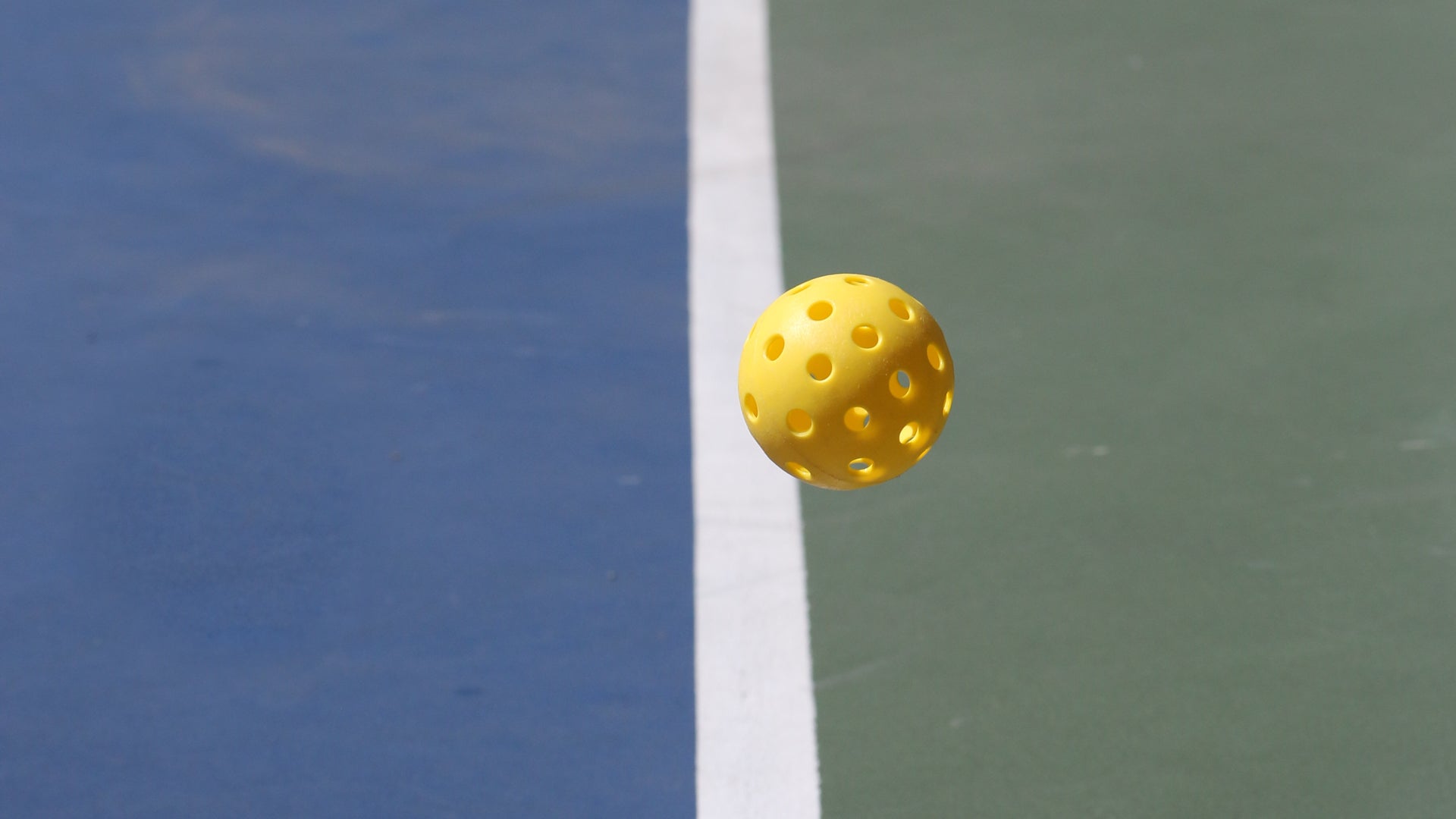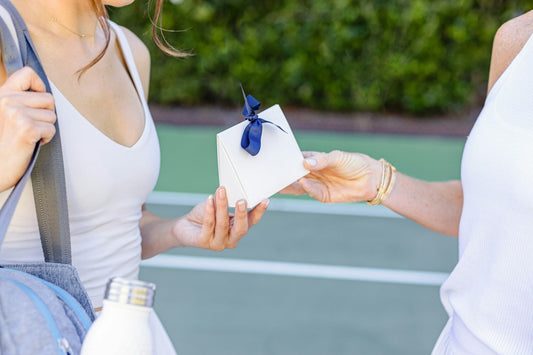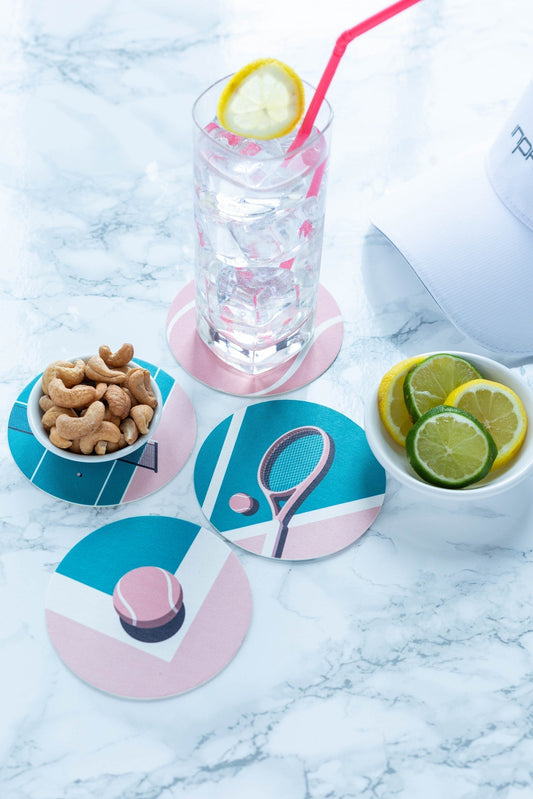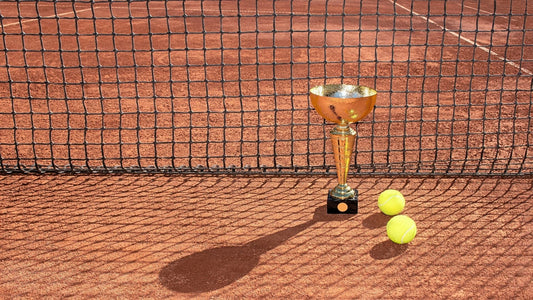The Skinny on Pickleball
What’s all the fuss about pickleball? The name sounds ridiculous, but people are going crazy over it. Why? If you’re asking these questions, don’t worry, we’ve got you. Grab your favorite beverage, get comfy, and keep reading for an introduction to the fastest growing sport in the country.
Pickleball is just as fun as its name implies. Combining tennis, table tennis, and badminton, it is perfect for any age or skill level and can be played either as singles or doubles. Players love how easy it is to learn and how extraordinarily welcoming and friendly the pickleball community is. Sounds pretty awesome, right?
Before heading to play your first pickleball game, or if you just want a quick refresher, here is a review of some of the important terms and tips you’ll need to be ready.
The Court
A pickleball court is similar to a tennis court in that it is divided into two sides by the net, but it’s smaller than a tennis court. The dimensions are the same as a doubles badminton court. Each side includes a baseline, sidelines, center lines, and the non-volley zone (NVZ), which is also known as the “kitchen.” Measuring 14 feet total (seven feet on each side of the net), the kitchen creates an area from which no volleys are allowed to be hit. If a ball bounces into the kitchen, a player may enter the NVZ to hit it after the bounce; otherwise, if a team steps into the kitchen to hit a volley (before the ball bounces), they lose the rally.

Equipment
The sport of pickleball is extremely easy to play anywhere, as a court can be created in any open space by using a portable net and drawing the lines with chalk, or any other way you’d like to mark them. Once you have a court set up, all you need are your paddles and a ball, and some friends to play with.

Now that you’ve got a few of the basics down, let’s get into how the game is played.
Game Play
Each game starts with the serve. In pickleball, a serve must be underhand and land in the crosscourt service box (outside of the NVZ). A server only has one opportunity to put the serve in; otherwise, it’s a fault and the serving team loses the point.
There are a few additional rules regulating pickleball serves. The server’s arm must move in an upward arc, and contact with the ball must be made above the waist. Additionally, the highest portion of the paddle head can’t be above the wrist when the ball is struck.
Once the ball is served, the receiving team must let it bounce before returning. Then, the serving team must also let it bounce before returning (so it has to bounce twice before volleys are allowed). Play continues until somebody commits a “fault,” such as hitting the ball into the net, out of bounds, allowing the ball to double bounce, or volleying from the NVZ.
Now that you know how to get your rallies going, let’s talk about how to rack up some points.

Scoring
Pickleball is similar to tennis in many ways, but scoring is not one of them. The best way to approach scoring is to forget anything you’ve ever learned about tennis. The scoring system is more like that of table tennis or badminton because your team can only earn points when it’s your serve. The rally or side-out scoring system is also used in volleyball. If your team wins the rally, you get a point, and you now switch sides (right/left) of the court to begin your next serve.
When playing doubles, each teammate serves until they lose the rally, and the other team doesn’t get a turn to serve until both teammates lose their service turns. In doubles, the player on the right side of the court at the start of the service turn will always serve first (no matter which player on the team served last) and in singles, service depends on the score. If the score is even, the next server serves from the right side of the court, and if it is odd, the server serves from the left side.
When starting a doubles game, the first service team only has one turn at the service until they miss the rally. Afterwards, each team has two service turns.
It might sound a bit confusing at first, but after a couple of games, you’ll get the hang of it.
Scoring in doubles pickleball is made up of three numbers:
- The first number is the score for the serving team.
- The second number is the score of the returning team.
- The third number is for the service turn you are on when playing doubles (e.g., the first server is 1 and the second server is 2).
When playing singles (which is less common than doubles), you will only use the first two numbers since there is only one service turn.
Most pickleball games are played to 11 points with a win by two advantage. For example, you can’t win 11-10, you'll need to win 12-10.
Line Calls
As in any sport, there will be judgment calls based on good faith sportsmanship. In pickleball, lines are considered “in.” As such, the lines surrounding the kitchen (NVZ) are considered part of the kitchen, so a serve touching the lines surrounding it would be considered out since the serve cannot bounce in the kitchen. Like tennis, each team can only call the balls that bounce on their side of the court (their opponent’s shots).

Pickleball in a Nutshell
Now that you’ve learned some of the important details about pickleball, here is a quick summary that you can refer back to as you become more familiar with playing the game:
- The serve must be underhand and crosscourt.
- The serve, return of serve, and shot after the return of serve must bounce before the ball can be hit.
- You can only score when serving.
- If the serving team wins the rally, they get a point and switch sides on their side of the court.
- If the serving team does not win the rally, the score remains the same, and the ball goes to the next server.
- No volleys are allowed to be hit when standing in the kitchen (NVZ).
- Play the game to 11 points (with a 2-point advantage to win).
Last but definitely not least, no matter who wins, finish with a paddle tap and by saying “great game” to your opponents. Not only is this a sportsmanlike gesture, but it is also an integral part of pickleball culture.
If you would like to see how these tips play out on the court, feel free to check out the quick video by our friends at the Pickler by clicking this link https://youtu.be/JMwKyO4-WYU.
Conclusion
Are you ready to put what you’ve learned into action? We don’t blame you if put down that drink and pick up the paddle right this minute; pickleball is a great way to connect with others while having fun and getting exercise.
To make sure you're fully equipped for your next pickleball session, consider checking out Doubletake's range of top-notch pickleball backpacks, totes, and duffels. Take a look and we’re confident you’ll find the perfect bag to complement your pickleball experience.





